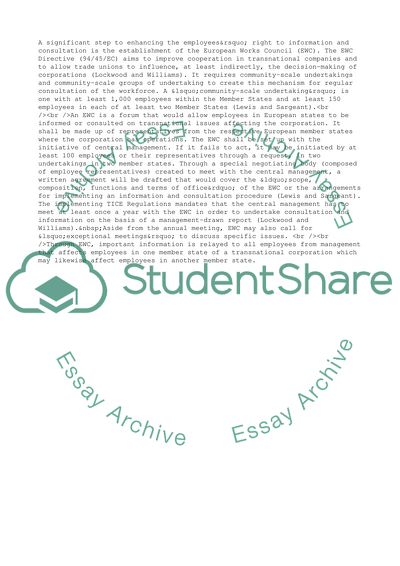Cite this document
(Global Employee Information and Consultation: Replicating the European Coursework, n.d.)
Global Employee Information and Consultation: Replicating the European Coursework. https://studentshare.org/management/1733436-information-and-consultation-of-employees-in-eu-going-global
Global Employee Information and Consultation: Replicating the European Coursework. https://studentshare.org/management/1733436-information-and-consultation-of-employees-in-eu-going-global
(Global Employee Information and Consultation: Replicating the European Coursework)
Global Employee Information and Consultation: Replicating the European Coursework. https://studentshare.org/management/1733436-information-and-consultation-of-employees-in-eu-going-global.
Global Employee Information and Consultation: Replicating the European Coursework. https://studentshare.org/management/1733436-information-and-consultation-of-employees-in-eu-going-global.
“Global Employee Information and Consultation: Replicating the European Coursework”. https://studentshare.org/management/1733436-information-and-consultation-of-employees-in-eu-going-global.


